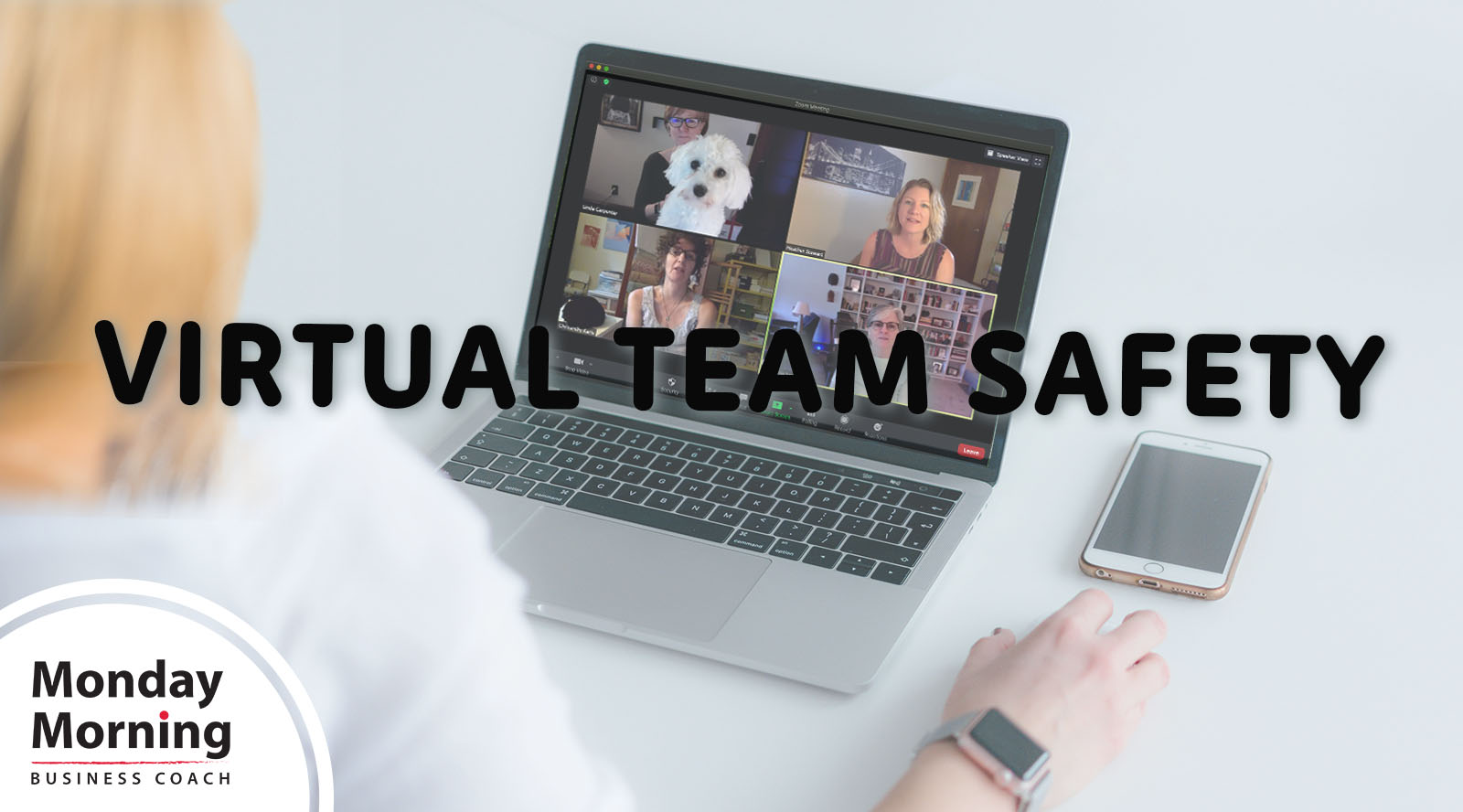In recent posts, we’ve shared what we mean by psychological safety, creating it with your team, and how foundationally important it is to team success. This week, we want to talk about psychological safety when meeting with one another on a virtual platform.
As we’ve said, creating psychological safety in a team and in your organization takes a commitment from the leader but also a commitment from the members of that team.
It’s everyone’s job to create a culture
where team members can bring their hopes,
fears, successes, and failures to the table
and know they’re safe from recrimination.
Here are four things you can do today to build greater psychological safety in your virtual teams and communities:
1. Separate your meetings.
- Review the business agenda for your meetings and determine how frequently you need to meet and how much time you need to successfully complete the agenda. Then look at how much social time your team needs to feel connected and supported.
- We’ve found that teams that separate time to connect and socialize from time to work on the business are having greater success and are most satisfied.
- Socializing at the beginning of a meeting often leaves too little time to get the business completed.
- Socializing at the end of a meeting is often rushed and can leave out many individuals.
- Just as you create a business agenda, consider creating a connecting agenda to support your team spending time together. An agenda might include:
- eating lunch together
- crafting something shared, like a playlist or a reading list
- creating an activity challenge
- identifying a question for each individual to respond to (we have some great questions if you need ideas!)
- For those of you shaking your head about “wasting time” on a connecting agenda, please reread Psychological Safety to remind yourself of the catalytic power of tending to this need.
2. Level the field.
- Rather than having some people in a room together signing into the platform as a group (which creates side conversations and distractions), have all individuals sign in on their own link to the platform.
- This levels the power dynamic that can happen when some people are together in a physical space and some are virtual.
3. Create engagement.
- One of the biggest problems we’re hearing with virtual meetings is that leaders don’t know how to create a structure that supports engagement, so they talk at their teams, assume silence is agreement, and end without ensuring understanding or fostering discussion and debate.
- Instead of talking at your team, consider using the equivalent of a board “consent agenda” in your team meetings, and share everything that can be shared via email as pre-work for the meeting.
- It will take time for your team members to get used to preparing for the meeting. If you prefer, you can offer them 10 minutes, at the start of the meeting, to review the notes before going around the room with a question that’s specific to the materials.
- We’re not suggesting you quiz them but, instead, identify something you’d like to know about their thoughts in response to the pre-work.
- It’s important to go quickly around the group and ask for comments – in larger groups you can call on random members (be sure it’s not always the same members) for their perspectives.
4. Use virtual pop-ins.
- When possible, grab a few minutes virtually rather than storing up all your thoughts and questions for one meeting.
- When people share office space, a lot gets done as you pass one another’s offices, grab a coffee, or ride in the elevator.
- Get the team used to texting or calling and asking, “Do you have a few minutes?” and then connect for no more than 5-10 minutes.
As you can see, you’re trying to mimic in-person meetings while working virtually, but you have to be more organized and more deliberate to keep the meetings from being unproductive.
Just like meeting in person, the goal of meeting virtually is to work on building vulnerable trust within the team. That means that you’re setting people up to be able to share their success as often as their failures, their concerns as often as their praise, and their excitement as often as their pessimism.
As a leader, you want to minimize indifference and maximize engagement and that happens when people feel psychologically safe – whether in person or on a virtual platform.
Think about adding in one or two of the ideas above to your meetings and let us know how it goes.
We’re here for you.
psychological safety in your virtual teams,
contact us today about Executive Coaching.


